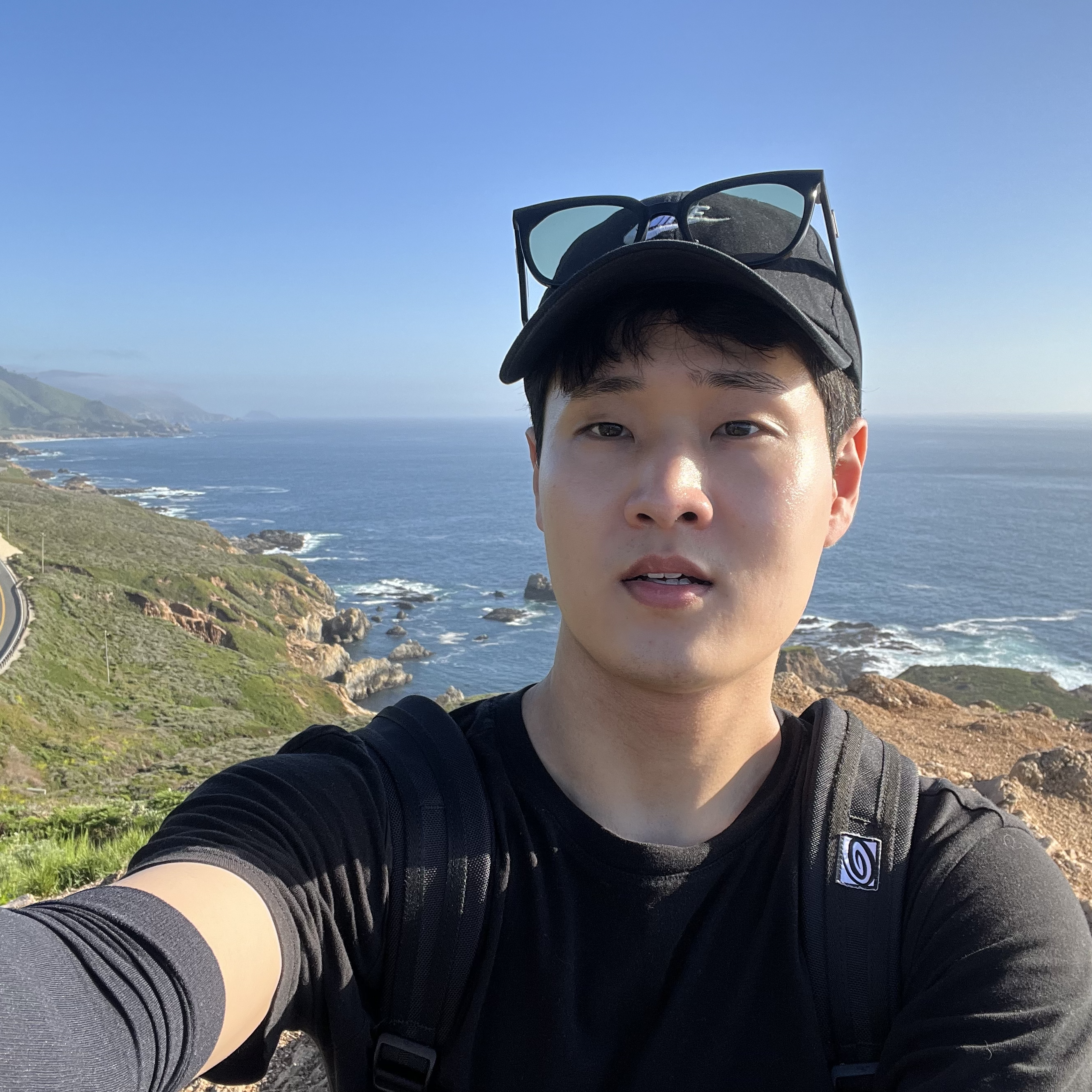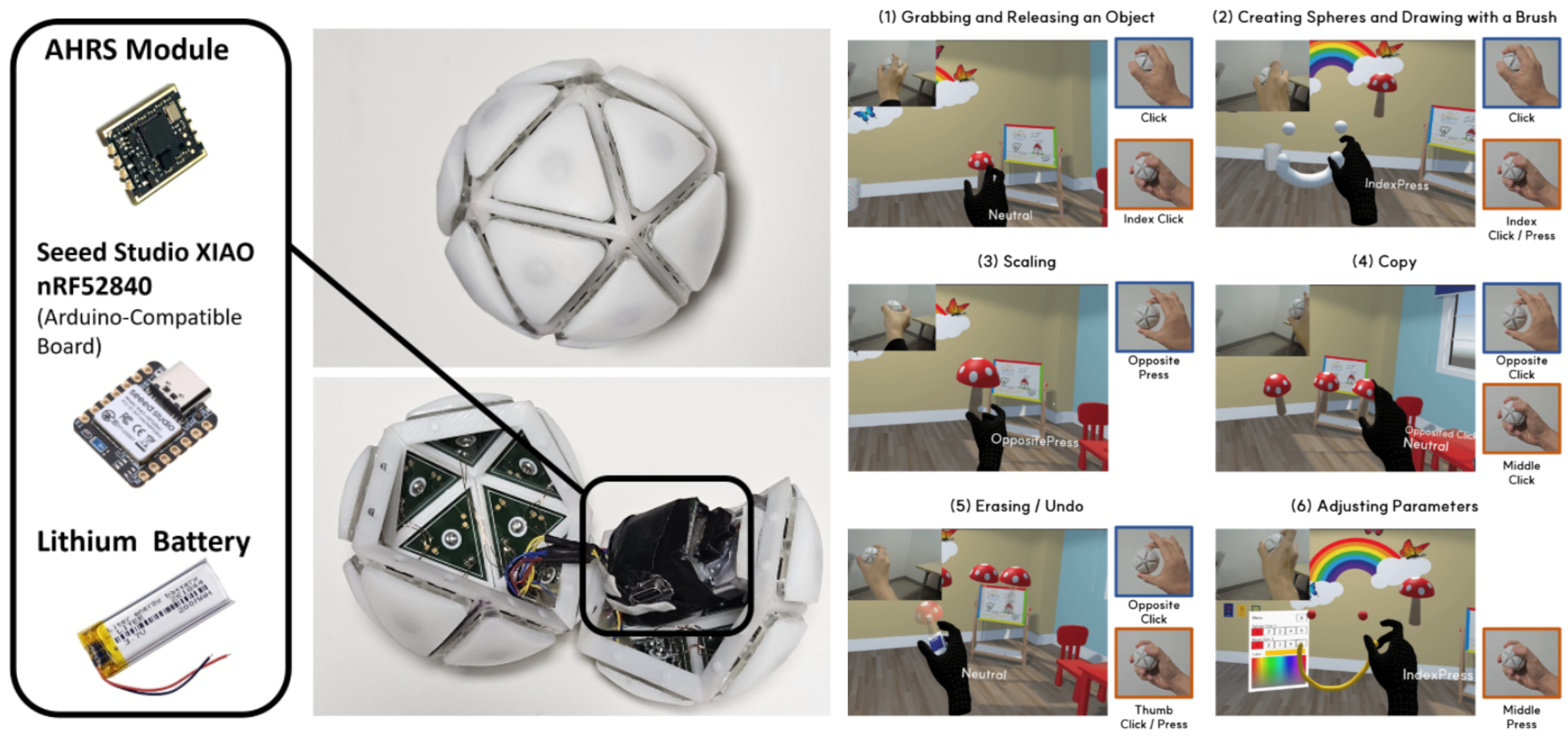├─ Research_Interests
XR Interaction

contact: cslim at kaist.ac.kr
안녕하세요, I'm Changsung Lim (임창성).
I'm passionate about discovering natural and more effective ways to interact in VR.
I believe that one day, everyone will have their own VR device, and I'm preparing for that future.
Feel free to reach out.
XR Interaction

Sunbum Kim, Kyunghwan Kim, Changsung Lim, Geehyuk Lee
Spherical tangible devices have been explored in various studies to support effective object manipulation and enhance immersive experiences in augmented and virtual reality environments. However, because their spherical form makes it difficult to incorporate traditional input channels, their applicability and use as general-purpose input devices remain limited. In this paper, we present the Ball20, an in-hand near-spherical 20-sided tangible controller with independent force sensing on each face, designed to enable diverse gesture interactions. We developed the Ball20 hardware, designed a gesture set, and implemented a drawing application to demonstrate the Ball20 concept. In the first user study, we evaluated the feasibility of using the Ball20 for a drawing application and collected feedback. In the second user study, we further refined the Ball20 and conducted a quantitative usability evaluation.

Changsung Lim, Sangyoon Lee, Geehyuk Lee
Dual-touchscreen laptops present opportunities for providing an expansive touchpad on the lower touchscreen. This expanded touchpad offers space for the engagement of both the dominant and non-dominant hands. In this context, it is necessary to redefine the role of the non-dominant hand. Therefore, we propose DualPad for dual-touchscreen laptops, which provides a long touchpad on the lower touchscreen. The non-dominant hand can utilize this DualPad to execute Touch Shortcut / Modifier, analogous to keyboard shortcuts and modifier keys on single-screen laptops. Moreover, we propose Dual Cursor as an example of bimanual interaction. In the demonstration, participants are expected to utilize the custom presentation program to create the given slide using two distinct methods. First, they employ the default layout of the virtual keyboard and virtual touchpad provided on the dual-touchscreen laptop. Then, they utilize DualPad for comparison.

Changsung Lim, Jina Kim, Myung Jin Kim
*All authors contributed equally to this research (alphabetical order)
Conventional controllers or hand-tracking interactions in VR cause hand fatigue while manipulating 3D objects because repetitive wrist rotation and hand movements are often required. As a solution to this inconvenience, we propose Thumble, a novel wearable input device worn on the thumb for modifying the orientation of 3D objects. Thumble can rotate the 3D objects depending on the orientation of the thumb and using the thumb pad as an input surface on which the index finger rubs to control the direction and degree of rotations. Therefore, it requires minimal motion of the wrist and the arm. Through the informal user study, we collected the subjective feedback of users and found that Thumble has less hand movement than a conventional VR controller.